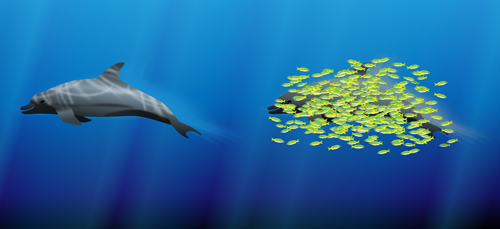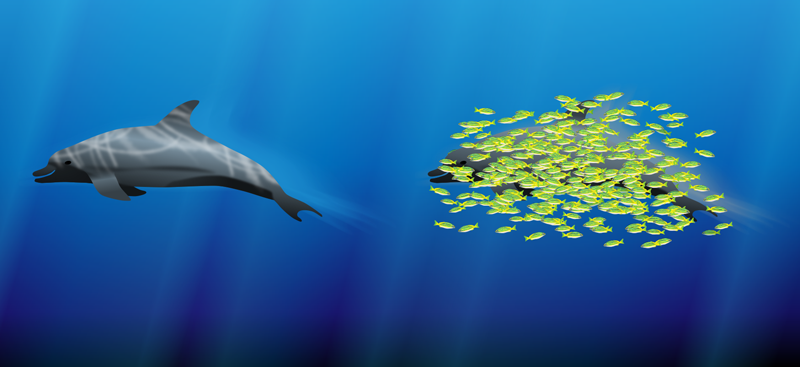From Quantum Quasiparticles to a Classical Gas
Boltzmann’s kinetic theory excellently describes the behavior of high-temperature gases, whose particles move around randomly and collide frequently. But if the gas is cooled down, its behavior changes dramatically, and Boltzmann’s classical picture must be abandoned for a quantum description. If the gas is made of fermions, it is describable by Fermi liquid theory—a powerful framework that applies to systems ranging from ordinary metals to the interior of neutron stars. Now Zhenjie Yan from the Massachusetts Institute of Technology (MIT), Cambridge, and his colleagues have tracked the crossover from classical to quantum behavior in a homogenous gas made of ultracold lithium atoms [1]. These results will serve as a benchmark for future theory and experiments that explore the complex “boundary” between the quantum and classical regimes.
Boltzmann gases all exhibit the same behavior, regardless of their atomic makeup (whether the atoms that form them are bosons or fermions, for example). But for quantum gases, composition matters. For example, collisions occur more frequently in a quantum gas made of identical bosons than they do in a classical gas, while collisions in gases made of identical fermions (Fermi gases) are suppressed. This behavior is a clear manifestation of Pauli’s exclusion principle, which states that no two fermions can occupy the same quantum state.
Fermi liquid theory describes the dynamics of Fermi gases using elementary excitations called “quasiparticles” to account for the gas’ properties [2]. Imagine adding a single impurity atom to a quantum gas. As the impurity interacts with nearby atoms, it creates a cloud of excitations, which “dress” the impurity. The dressed impurity—the quasiparticle—has modified properties such as energy, charge, and mass (Fig. 1). To a good approximation, quasiparticles behave as free particles. So, by describing the gas in terms of quasiparticles, Fermi liquid theory allows the physics of the system to be drastically simplified. Martin Zwierlein, one of the researchers for the new study, and his collaborators confirmed the existence of these quasiparticles in 2009, when they studied an ultracold Fermi gas containing a small number of impurities [3]. They named the quasiparticles Fermi polarons. Further studies by other groups confirmed their results and found other quasiparticles, including so-called dressed dimers and metastable excited states [4–6]. While others reported how these excitations arise in real time [7]. But exactly how a gas describable by Fermi liquid theory transitions from quantum to classical remained mostly unexplored. Such a transition has been observed before in a different system, but the observation was restricted to the case of equal numbers of impurities and atoms. [8].
In their new experiments, the MIT group provides an accurate and comprehensive picture of the transition by studying a system containing a smaller number of impurities. The team trapped a cloud of lithium-6 atoms using their recently developed “laser box” (see Making Waves in a “Glass” Full of Atoms) and cooled the atoms to temperatures ranging from well below to well above the Fermi temperature, which is approximately 0.5 𝜇K for this system. In the box trap, these strongly interacting fermions spread out evenly over a tin-can-shaped volume, creating a gas with a homogenous density that allowed for extremely clean measurements. Their gas contained mostly spin-up ( ↑) lithium atoms and a few spin-down ( ↓) lithium atoms, which acted as impurities and interacted strongly with the spin-up atoms, creating quasiparticles. Spin up and spin down correspond to internal states that mimic those of spin-1/2 particles.
To monitor the quasiparticles, the team used a technique called ejection spectroscopy in which photons flip the internal state of the impurities to one that does not interact with the gas. Yan and colleagues measured the number of flipped atoms as a function of the photons’ energy, from which they determined the spectrum of excitations of the gas. From this spectrum, they could figure out the energies and decay rates of the quasiparticles. They also found three other key quantities: the number of spin-up particles dressing each impurity; the so-called “contact” of the gas, which quantifies the probability of two particles being found very close to each other; and the compressibility of the spin-down atoms, which determines how easy it is to squeeze a cloud of dressed impurities.
But the group’s marquee experiment is measuring the quasiparticle spectrum at different temperatures, which allows them to “watch” the impurities as the behavior of the gas transitions from quantum to classical. Well below the Fermi temperature, the gas’s spectrum contained a single sharp peak. This feature is a hallmark prediction of Fermi liquid theory and signals the presence of quasiparticles with a well-defined energy that can be calculated from the peak’s position. Mathematically, the system can be described as an ensemble of noninteracting identical fermions, a so-called Fermi sea, in which the impurity creates a few excitations [9]. (These excitations are created close to the Fermi surface—the surface in momentum space that separates occupied and unoccupied states). The team’s measured properties are in excellent agreement with this picture.
Increasing the gas’ temperature, the team observed that the peak decreased in energy and broadened noticeably. This behavior indicates that it’s easier for impurities to excite nearby atoms and therefore to reduce their energy. At the same time, quasiparticles are slowed down by increasing numbers of collisions. As temperature further increases, the quasiparticles progressively lose their identity, and the applicability of Fermi liquid theory to the system becomes questionable. The system’s behavior in this regime is very complex and still relatively unexplored, making it highly intriguing.
Just below the Fermi temperature, where quantum effects are expected to vanish, the team observed an abrupt shift in the energy of the spectrum’s peak, which dropped to zero. The peak also stopped broadening and instead started to narrow. This behavior is expected for a Boltzmann gas, and kinetic theory accurately describes the team’s observations.
The MIT group has presented an impressive array of measurements, and their work constitutes an important advance in understanding the behavior of Fermi systems. In future investigations it would be interesting to observe more closely how individual quasiparticles interact with each other, something unexplored in these experiments. Another possible avenue for investigation is examining how impurities behave in a boson gas, since the classical and quantum states of such a system are known to be separated by a sharp phase transition.
This research is published in Physical Review Letters.
References
- Z. Yan et al., “Boiling a unitary Fermi liquid,” Phys. Rev. Lett. 122, 093401 (2019).
- G. Baym and C. Pethick, Landau Fermi-Liquid Theory (Wiley-VCH, Weinheim, 1991)[Amazon][WorldCat].
- A. Schirotzek, C.-H. Wu, A. Sommer, and M. W. Zwierlein, “Observation of Fermi polarons in a tunable Fermi liquid of ultracold atoms,” Phys. Rev. Lett. 102, 230402 (2009).
- C. Kohstall, M. Zaccanti, M. Jag, A. Trenkwalder, P. Massignan, G. M. Bruun, F. Schreck, and R. Grimm, “Metastability and coherence of repulsive polarons in a strongly interacting Fermi mixture,” Nature 485, 615 (2012).
- M. Koschorreck, D. Pertot, E. Vogt, B. Fröhlich, M. Feld, and M. Köhl, “Attractive and repulsive Fermi polarons in two dimensions,” Nature 485, 619 (2012).
- F. Scazza, G. Valtolina, P. Massignan, A. Recati, A. Amico, A. Burchianti, C. Fort, M. Inguscio, M. Zaccanti, and G. Roati, “Repulsive Fermi polarons in a resonant mixture of ultracold 6Li atoms,” Phys. Rev. Lett. 118, 083602 (2017).
- M. Cetina et al., “Ultrafast many-body interferometry of impurities coupled to a Fermi sea,” Science 354, 96 (2016).
- S. Nascimbène, N. Navon, K. J. Jiang, F. Chevy, and C. Salomon, “Exploring the thermodynamics of a universal Fermi gas,” Nature 463, 1057 (2010).
- F. Chevy, “Universal phase diagram of a strongly interacting Fermi gas with unbalanced spin populations,” Phys. Rev. A 74, 063628 (2006).





